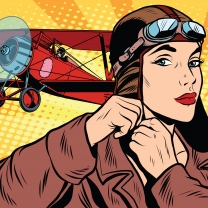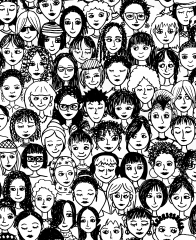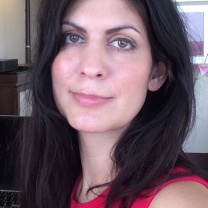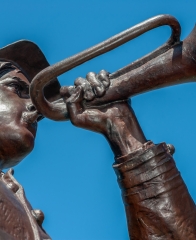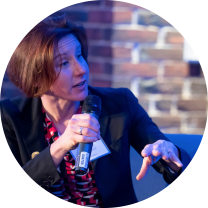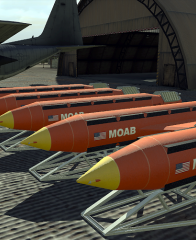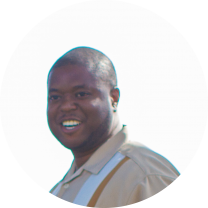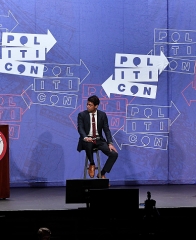 / Keeping Women in the Air Force
Subscribe
/ Keeping Women in the Air Force
Subscribe

In my experience, women join the military aviation community for the same reasons as men. These reasons have to some extent become clichés, but they are nevertheless true. We join in order to be part of something greater than ourselves, in order to defend the country, and for the opportunities in leadership and personal growth. The interesting question is what makes people remain military aviators. This ongoing retention problem for the Air Force has resulted in a shortage of roughly 1,500 pilots. As more pilots transition to commercial airlines or other civilian jobs, the shortage will continue to increase. When the Department of Defense conducts exit surveys with pilots at the end of their service commitments, many cite being overworked as the reason for transitioning out of the Air Force. The problem is that they are doing too many side jobs within the unit that detract from their main roles and missions. Others say that they dislike the requirement of completing milestones, which they perceive as irrelevant, for career advancement opportunities.
For women, the issues that lead to military separation are more complex. We too suffer from overwork and the tedium of completing potentially meaningless milestones. However, we also have, to some extent, an outsider status. In this way, aviation has much in common with STEM: many of its pioneers were women, whose contributions are under credited at best and forgotten at worst. Despite a history of many women innovators, both STEM and aviation are disproportionately populated by men.
Throughout aviation history, women pilots have been trailblazers. The most famous woman pilot, Amelia Earhart, was the first person to complete many long distance solo flights and was a fierce advocate for fellow women aviators. Women pilots like Raymonde de Laroche and Helene Dutrieu, who in 1910 were among the first pilots ever, set records and braved planes of limited engineering, taking the same risks (and accomplishing the same things) as men. Bessie Coleman, who in 1920 faced impassable resistance in the US to attend flight school because she was black, moved to France (from her family’s sharecrop in Texas) so she could earn her wings. She later set many acrobatic and flying records. Jackie Cochran, born in 1906, was one of the best racing pilots of her generation. At the time of her death, no other pilot held more speed, distance, or altitude records in aviation history. She also was the driving force and director of the Women Airforce Service Pilots (WASPs), an organization of women who flew over 60 million miles in every type of military aircraft during WWII.
Because of the history of aviation’s selective memory, flying became and remains perceived as a male dominated pursuit where pilots like Robin Olds are praised and few women remembered. During two months of the year, airmen grow mustaches, a tribute to Robin Olds, who grew a famously out-of-regulations mustache as a “gesture of defiance” to his superiors and for squadron morale during the Vietnam War. The tradition of growing mustaches continues to this day, an endeavor that the uniform regulations will only allow men to do, and as a result, women physically cannot participate and are entirely excluded from such camaraderie. Women may wear fake mustaches during unofficial events or judge mustache competitions, but both of these options highlight the othering of women: unable to enter the competition themselves or to share a common experience with their fellow aviators. This selective tradition, and others like it, serve to further entrench a male-orientated perception of pilots. Aviators could, in principle, choose any number of historical pilots to honor and commemorate; they choose to continue a tradition in which women are excluded from the commemoration.
Women in today’s Air Force have to fight harder to be included, whether it is fighting to fit into the existing culture or fighting to change it. For decades, women like General Jeannie Leavitt have inspired women and girls to pursue aviation. Many men in leadership roles are also trying to level the playing field. In my experience, however, the problem lies within the ranks of young lieutenants. I have felt such doubt, judgment, and othering from my young male peers, and I know other women have had similar experiences. This raises the question of why aviation officers wait until they are in leadership roles to support women. Women in leadership talk about how, when they were new to the squadron, they would “go along to get along,” hoping to change things when they were in command several years later. The “bro” culture for which the military aviation community is known is perpetuated mostly by the newly indoctrinated, and it is hardly changed by a well-intentioned commanding officer. The men of the flying squadrons enjoy the prestige of being a pilot, and they package their masculinity into that sense of self-worth, making it harder for them to decouple aviation and masculinity. This means that it is all the harder for women to be recognized as an equally capable pilot; we lack the masculine component. Camaraderie and family-like relationships should exist in such a dangerous and exhilarating field, but the community bond should not be built on the shared masculinity that the majority (for now) enjoys.
The sense of outsider status is one reason why today’s pilots are so rarely women. Sometimes people say that women simply are not interested, but that is flatly false. Flying is extremely fun and challenging, engaging both the mind and the body to respond to multiple external stimuli. It involves constantly reviewing existing parameters and making split-second decisions based on an influx of new information. Aviation does not, however, contain any aspects that are inherently masculine or feminine. Being attracted by a career that includes risk, reward, and skill is gender-neutral. The chilling effect that prevents women from joining or staying in the Air Force comes from somewhere else. Women were interested in aviation at its inception—over 25,000 WASPs applied for about 1,000 slots, after the general public knew of the danger involved—and the interest remains undimmed today. But the role of women in aviation puts us in a lose-lose situation: if we try to fit in, we must at least tacitly endorse the pernicious bro-culture; if we try to change the culture from the inside, we put ourselves at risk of alienation and retribution. Indeed, even attaching one’s name to an essay like this is dangerous.
Women have both the interest and capabilities to become aviators, but we must work harder to prove our competency. The culture should continue to be tight-knit because of the danger and sacrifices required, but it can be from the shared experiences as aviators, not the men-only fraternity feel that plagues many of today’s Air Force aviation squadrons. Without this change in culture, women will continue to be the minority for decades to come.
Diana Prince is in aviation, and has been working to change women’s experiences in the Air Force since World War II.
Photo Credit: "WASP pilots Frances Green, Margaret Kirchner, Ann Waldner, and Blanche Osborne at the four-engine school at Lockbourne Army Airfiled, Ohio, circa 1944, U.S. Air Force," via Shutterstock, 30 June 2017.
